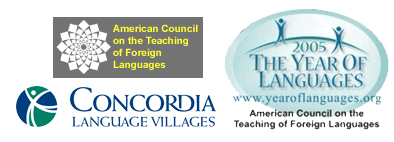GLOBE Language and Culture Study - GLOBE Across the Curriculum
GLOBE Language and Culture Study

GLOBE students learn about various languages and cultures as they engage in authentic projects and collaborations with one another, students in other countries, and world experts in the disciplines they are studying. Because GLOBE is a worldwide program, materials are currently available in the six United Nations languages (Arabic, English, French, Mandarin Chinese, Russian, and Spanish), plus German, Japanese, Thai, and a number of indigenous languages. Additional materials in other languages are becoming available through our international partners.
GLOBE provides English Language Learners (ELLs) with access to high quality science information and opportunities to assume leadership positions in their classrooms in discussions with students from different countries. GLOBE integrates literacy skills with all school subjects and Elementary GLOBE books introduce early primary students to the study of Earth System Science (ESS). In addition, students record their personal observations in field notebooks and publish the results of their research projects. GLOBE is used to teach English to students for whom it is not their first language, and to teach English and science content to deaf and hard-of-hearing students who use Sign Language.

Many language teachers have incorporated GLOBE activities into their daily classroom activities since 1995. The American Council on the Teaching of Foreign Languages (ACTFL) endorsed GLOBE in February 2005 as a model program promoting content-based language study around the world, featuring the GLOBE Program during their 2005 Year of Languages campaign. In 2009, Concordia Language Villages will begin incorporating GLOBE into their curricular activities.

For more information about the GLOBE materials available in various languages, please see GLOBE Resources in International Languages.




